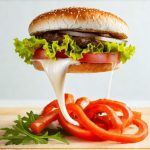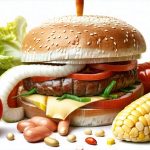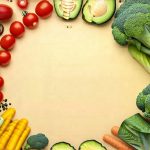Gas and indigestion are incredibly common digestive complaints affecting a vast majority of people at some point in their lives. While often dismissed as minor inconveniences, these symptoms can range from mildly uncomfortable bloating and flatulence to debilitating pain and disruption of daily activities. Understanding the root causes behind gas and indigestion is crucial for managing them effectively, and surprisingly, food plays a significant role. It’s not always about what you’re eating, but how your body processes it, and certain foods are notorious for triggering these uncomfortable experiences. This article will delve into the types of foods most likely to contribute to gas and indigestion, exploring the underlying mechanisms and offering insights into dietary adjustments that may provide relief.
The digestive process is a complex interplay between mechanical breakdown (chewing and muscle contractions) and chemical digestion (enzymes breaking down food). When this process is disrupted – perhaps by eating too quickly, not chewing thoroughly enough, or consuming foods your body struggles to digest – it can lead to undigested carbohydrates reaching the colon. Here, they become a feast for gut bacteria, resulting in gas production as a byproduct of their fermentation process. Individual tolerances also vary greatly; what causes bloating in one person may have no effect on another. Moreover, underlying conditions like Irritable Bowel Syndrome (IBS) or lactose intolerance can significantly amplify these effects, making certain foods problematic even in small quantities. Understanding how to eating habits impacts digestion is a key first step.
Common Culprits: Foods Known to Produce Gas
Certain food groups are consistently identified as gas producers due to their composition and how the body processes them. Legumes, such as beans, lentils, and chickpeas, contain oligosaccharides, complex sugars that humans lack the enzymes to fully digest. This means they arrive in the large intestine largely intact, where bacteria happily ferment them, releasing gases like hydrogen, carbon dioxide, and sometimes methane. Cruciferous vegetables – broccoli, cauliflower, cabbage, Brussels sprouts – also fall into this category, containing raffinose, another undigestible carbohydrate. These aren’t necessarily foods to avoid altogether; they are incredibly nutritious! But understanding their potential to cause gas allows for mindful consumption and potentially incorporating strategies like soaking beans overnight or pairing these vegetables with digestive enzymes. Knowing foods that cause gas can help you make informed choices.
Dairy products can be a significant source of indigestion for individuals with lactose intolerance. Lactose is the sugar found in milk, and people lacking sufficient lactase enzyme struggle to break it down, leading to fermentation in the gut. Even those without diagnosed lactose intolerance may experience sensitivity as lactase production naturally declines with age. Similarly, foods high in fructose – apples, pears, honey, high-fructose corn syrup – can cause issues for some due to difficulties absorbing fructose in the small intestine. This leads to osmotic diarrhea and gas as undigested fructose draws water into the colon.
Finally, artificial sweeteners like sorbitol, mannitol, and xylitol, often found in sugar-free gum and candies, are poorly absorbed by the gut and can contribute significantly to gas production and bloating. It’s important to read food labels carefully to identify these ingredients if you’re prone to digestive upset. The key takeaway is that it’s not about eliminating entire food groups but understanding your personal sensitivities and adjusting your intake accordingly. You may also want to examine foods to avoid for long-term relief.
Fiber, Fats & Carbonation: Dietary Factors Influencing Digestion
While fiber is essential for overall health, a sudden increase in fiber intake can temporarily cause gas and bloating as the gut microbiome adjusts. This is especially true if you’re not drinking enough water to help move the fiber through your digestive system. It’s best to gradually increase fiber consumption over several weeks, allowing your body time to adapt. Soluble fiber, found in oats, apples, and beans, tends to cause less gas than insoluble fiber (wheat bran, vegetables), but both are important for digestive health. Considering high-fiber foods may be a good strategy.
High-fat foods can slow down digestion, giving food more time to ferment in the gut and potentially leading to increased gas production. This is because fat takes longer to break down compared to carbohydrates or proteins. Fried foods, fatty meats, and rich sauces are prime examples. The slower gastric emptying also means food sits for longer, increasing the likelihood of discomfort.
Carbonated beverages introduce air into the digestive system, directly contributing to bloating and gas. Even seemingly innocuous sparkling water can trigger symptoms in sensitive individuals. Moreover, swallowing air while eating (especially if you eat quickly or talk while eating) adds to the problem. Avoiding carbonated drinks and practicing mindful eating – slowing down, chewing thoroughly, and avoiding distractions – can help minimize this effect.
Identifying Your Trigger Foods
Determining which foods specifically cause your gas and indigestion requires a bit of detective work. A food diary is an excellent starting point.
- Keep a detailed log of everything you eat and drink for at least a week, noting the time of consumption.
- Alongside each entry, record any symptoms you experience – bloating, gas, pain, diarrhea – and when they occur in relation to your meals.
- Look for patterns: Are there specific foods that consistently trigger symptoms? Do certain combinations seem problematic?
An elimination diet can be even more helpful. This involves removing suspected trigger foods from your diet for a period of time (typically 2-6 weeks) and then gradually reintroducing them one at a time to observe any reactions. It’s important to consult with a healthcare professional before starting an elimination diet, especially if you have underlying health conditions or dietary restrictions. If cramping is a concern, smart ways to investigate can provide guidance.
Managing Existing Indigestion & Gas
Beyond dietary changes, several lifestyle adjustments can help alleviate gas and indigestion symptoms. Staying hydrated is crucial for optimal digestion; water helps move food through the digestive tract and prevents constipation, which can exacerbate bloating. Regular exercise promotes gut motility – the movement of food through your system – reducing the time available for fermentation.
Mindful eating practices are also incredibly beneficial. This involves slowing down, chewing thoroughly, and avoiding distractions during meals. Eating in a relaxed environment reduces stress, which can negatively impact digestion. Consider smaller, more frequent meals instead of large portions to avoid overwhelming your digestive system.
Probiotics & Digestive Aids
The gut microbiome plays a crucial role in digestion, and probiotic supplements or foods containing probiotics (yogurt, kefir, sauerkraut) may help restore balance and reduce gas production. However, the effectiveness of probiotics varies greatly between individuals, so it’s important to choose a high-quality product and consult with a healthcare professional.
Digestive enzymes – such as lactase for lactose intolerance or alpha-galactosidase for beans – can also aid in breaking down difficult-to-digest carbohydrates, reducing gas production. These are available over the counter, but again, it’s best to discuss their use with a doctor or registered dietitian, especially if you have underlying health conditions. Remember that these aids address symptoms; they don’t necessarily fix the root cause of the problem. Focusing on long-term dietary and lifestyle changes remains the most effective approach for managing gas and indigestion in the long run. Daily behaviors can also play a role.


















